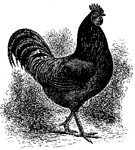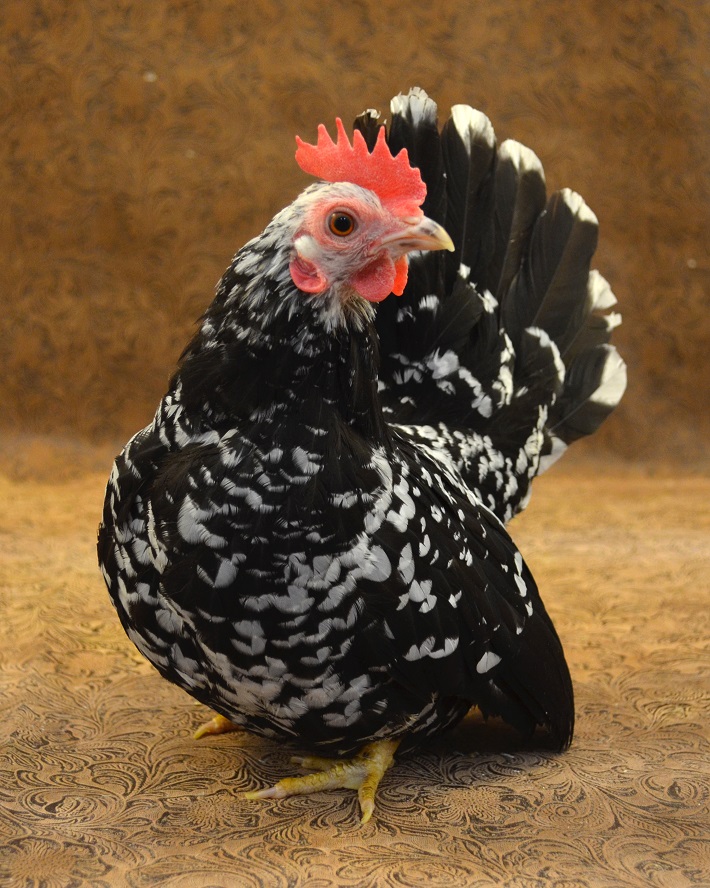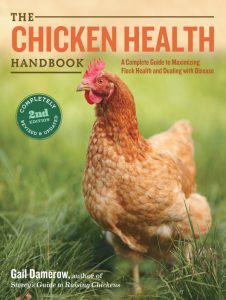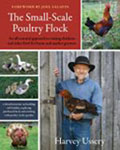
Breed Facts
Status:
Threatened
Use:
Ornamental
Egg Color:
Cream
Egg Size:
Small
Mature Weight:
Males 26 oz./ Female 22 oz.
Temperament:
Alert
Characteristics:
Good forager; not cold tolerant
Country of Origin:
Southeast Asia
JAPANESE BANTAM CHICKEN
The Japanese Bantam is one of the oldest recorded true bantam breeds in the world without a large fowl counterpart. Chickens with their description have been included in Japanese art and embroideries since the 1600s. According to the 1977 Bantam Breeding and Genetics by Fred P. Jeffrey, the birds originated in “South China,” which is now Vietnam, Thailand, and Malaysia. Known as “Chabo” in Japan, the word is derived from the Japanese words Chūgoku nanbu, meaning South China.
The birds were revered and bred as living garden ornaments, passed in families from generation to generation. Today, Japanese Bantams can also be found in Europe, the United Kingdom, and the United States. They are considered an extreme phenotype in the bantam world; their head, comb, and wattle are larger in proportion than other bantam breeds. Their huge tail and tiny legs combine for an impressive visual effect.
Japanese Bantams carry a lethal factor connected to the short-legged gene. As a result, they will not breed true. Twenty-five percent of any hatch will be long-legged and considered culls. Fifty percent of the hatch will have short legs and be keepers. The remaining 25 percent will die in the shell as a result of the lethal gene.
They have yellow or dusky yellow shanks and toes, depending on the variety. Japanese Bantams have a tail carriage slightly forward of the perpendicular and are the only breed allowed this distinction. Mature males are 26 oz. (737 grams) and females weigh 22 oz. (624 grams). The hens lay small cream-colored eggs and make excellent broodies.
Feed requirements include an 18-20 percent crumble which is optimal for breeding. They like dark greens and will eat a lot if given the opportunity. Medicated chick starter is recommended until they are mature, especially in areas with rainy weather. Occasional scratch grains are great as treats, but be careful not to get too much starch in their diet. It’s best to keep them lean.
Japanese Bantams should be raised in coops or cages with solid flooring and allowed ample room for exercise. Wire floors will fray feathers. They benefit greatly from outside foraging. In northern climates, they will need supplemental heat to avoid frostbite on combs and wattles.
Young birds can be excitable. As they are handled, Japanese Bantams calm down and make very nice pets or showmanship birds.
Did you know:
Membership dollars and charitable gifts provide LOTS of free heritage breed resources like archived Facebook chats, microgrants, webinars, book downloads, and charts for comparing breed attributes. Staff members also answer phone calls and emails every day. These and many more services are designed to graduate more breeds off the Conservation Priority List. Thank you for investing in our ability to serve the heritage breeds community with free resources!
You may be interested in…

Breed Facts
Status:
Threatened
Use:
Ornamental
Egg Color:
Cream
Egg Size:
Small
Mature Weight:
Males 26 oz./ Female 22 oz.
Temperament:
Alert
Characteristics:
Good forager; not cold tolerant
Country of Origin:
Southeast Asia
You may be interested in…




